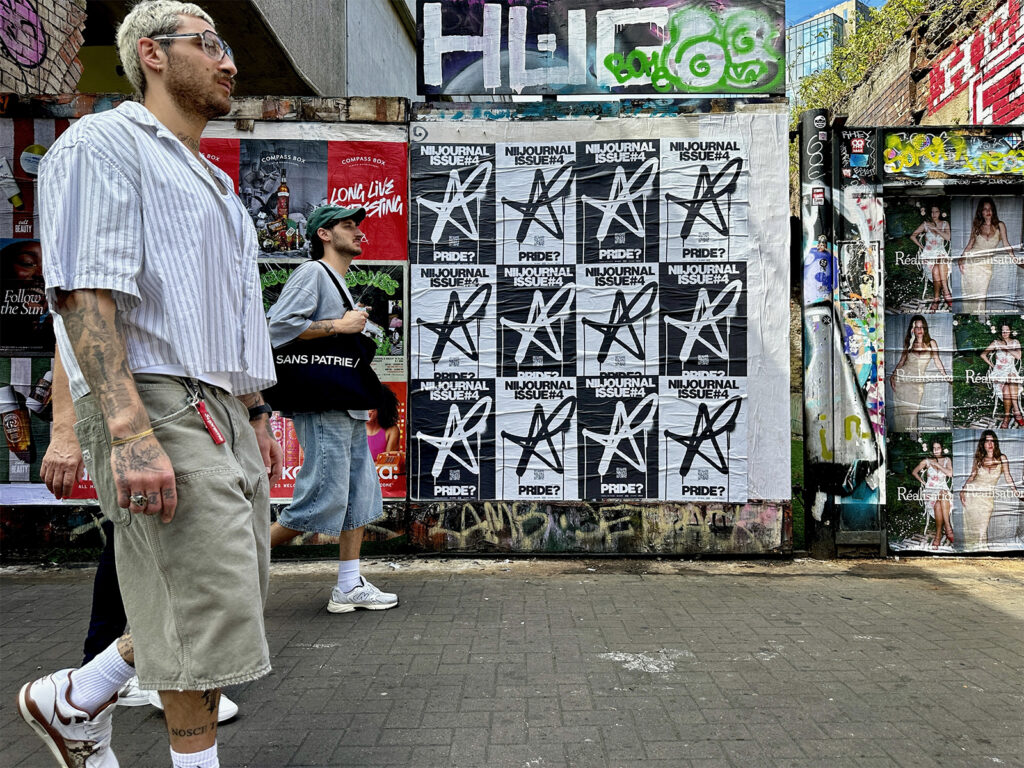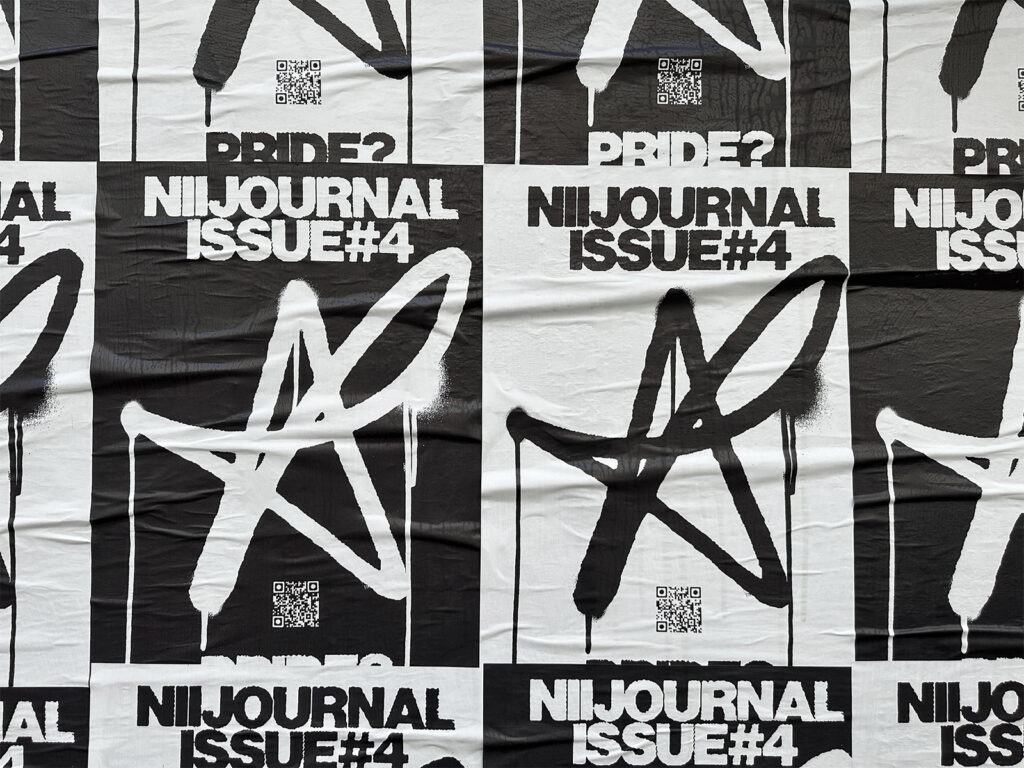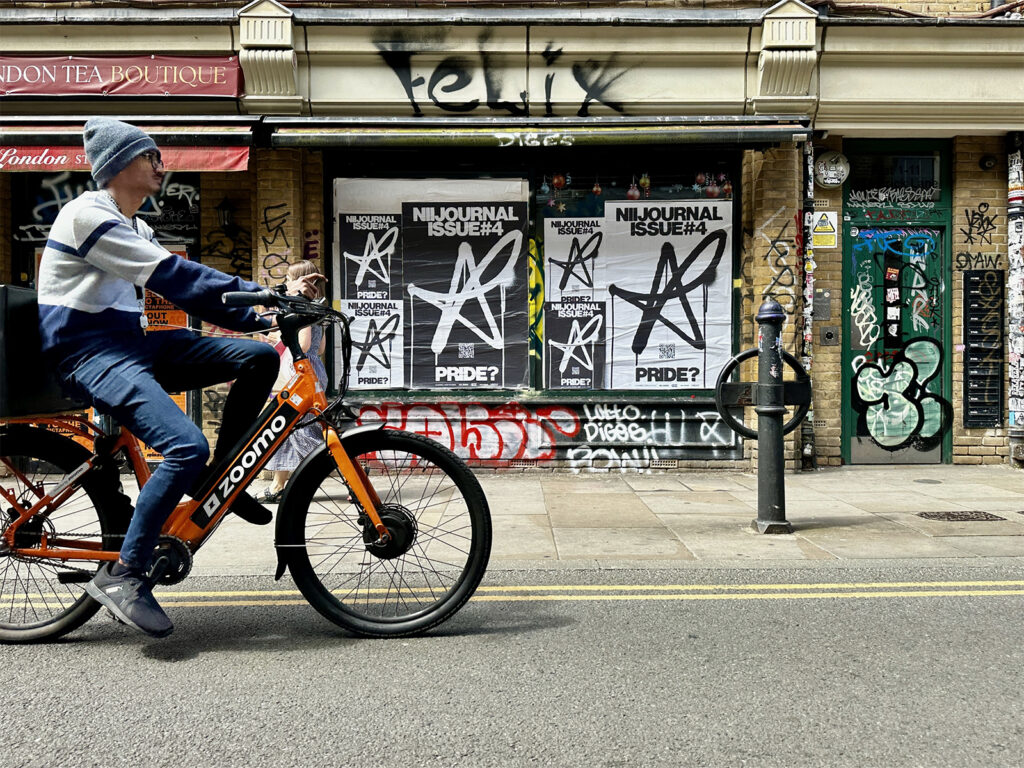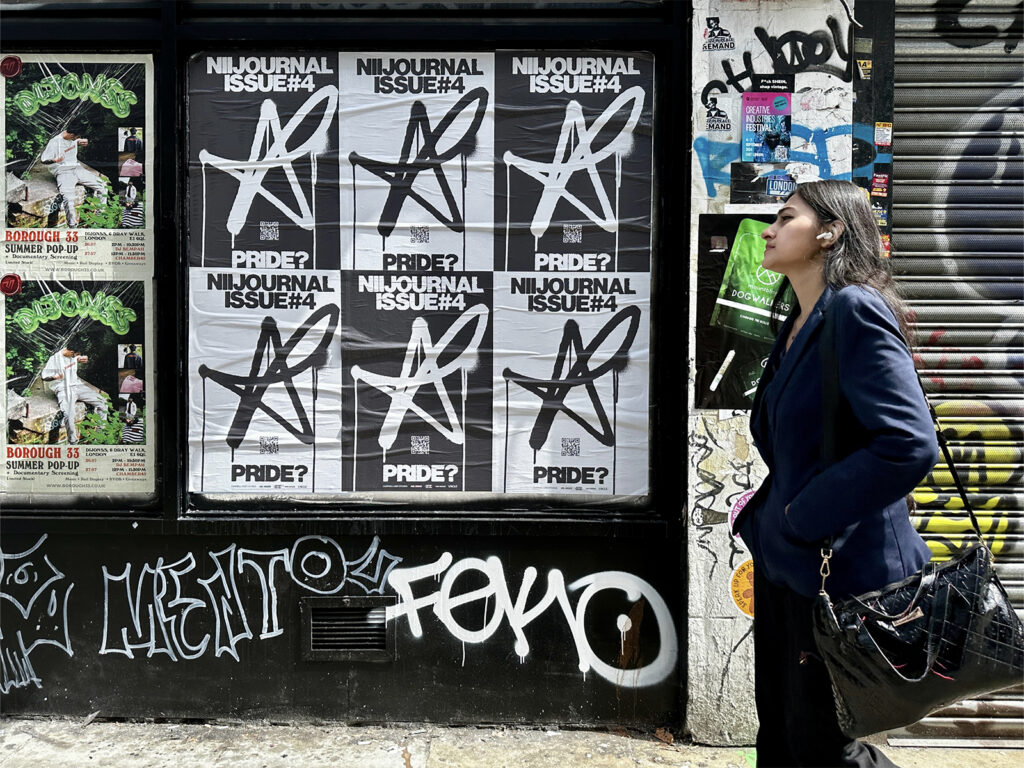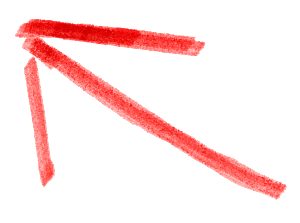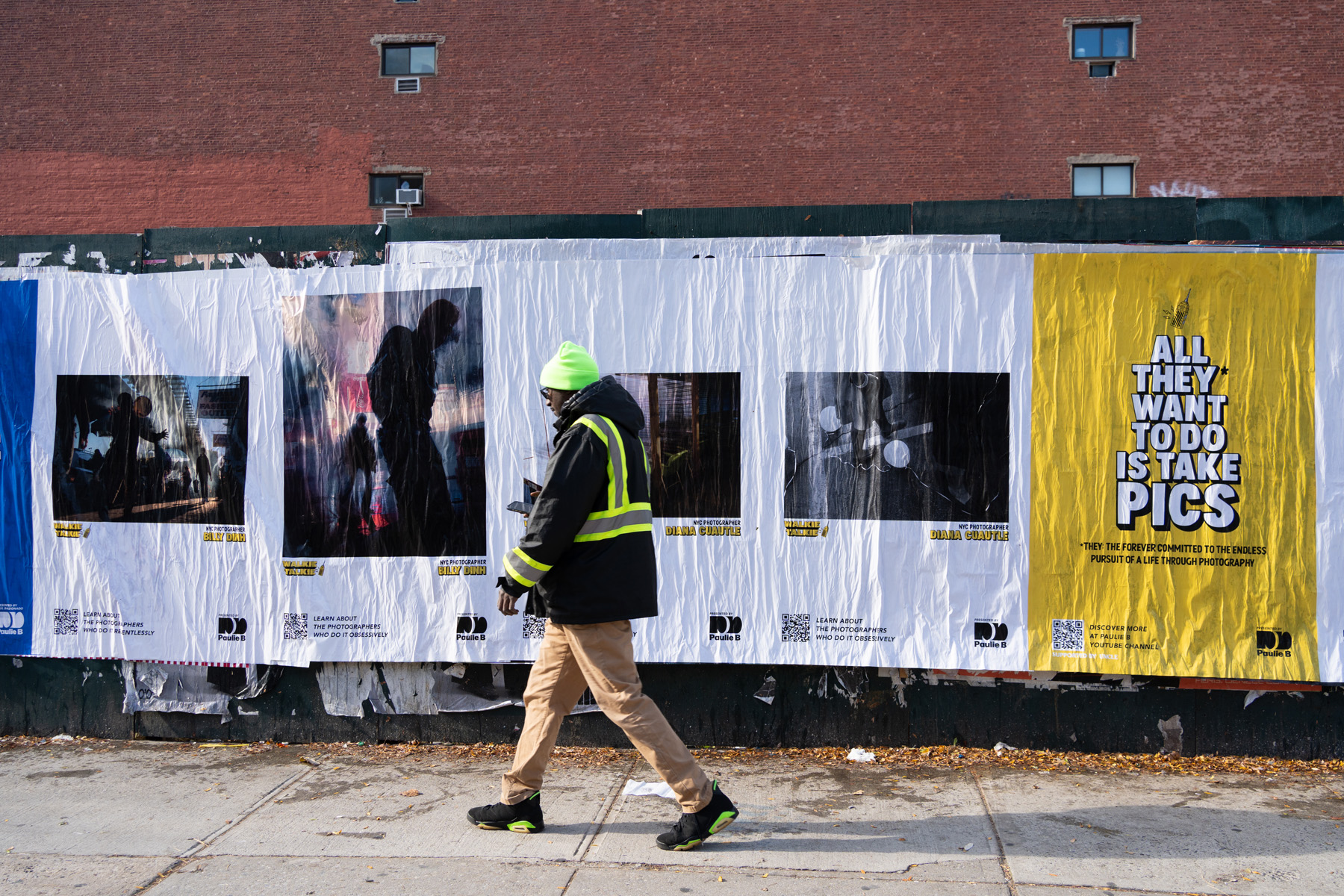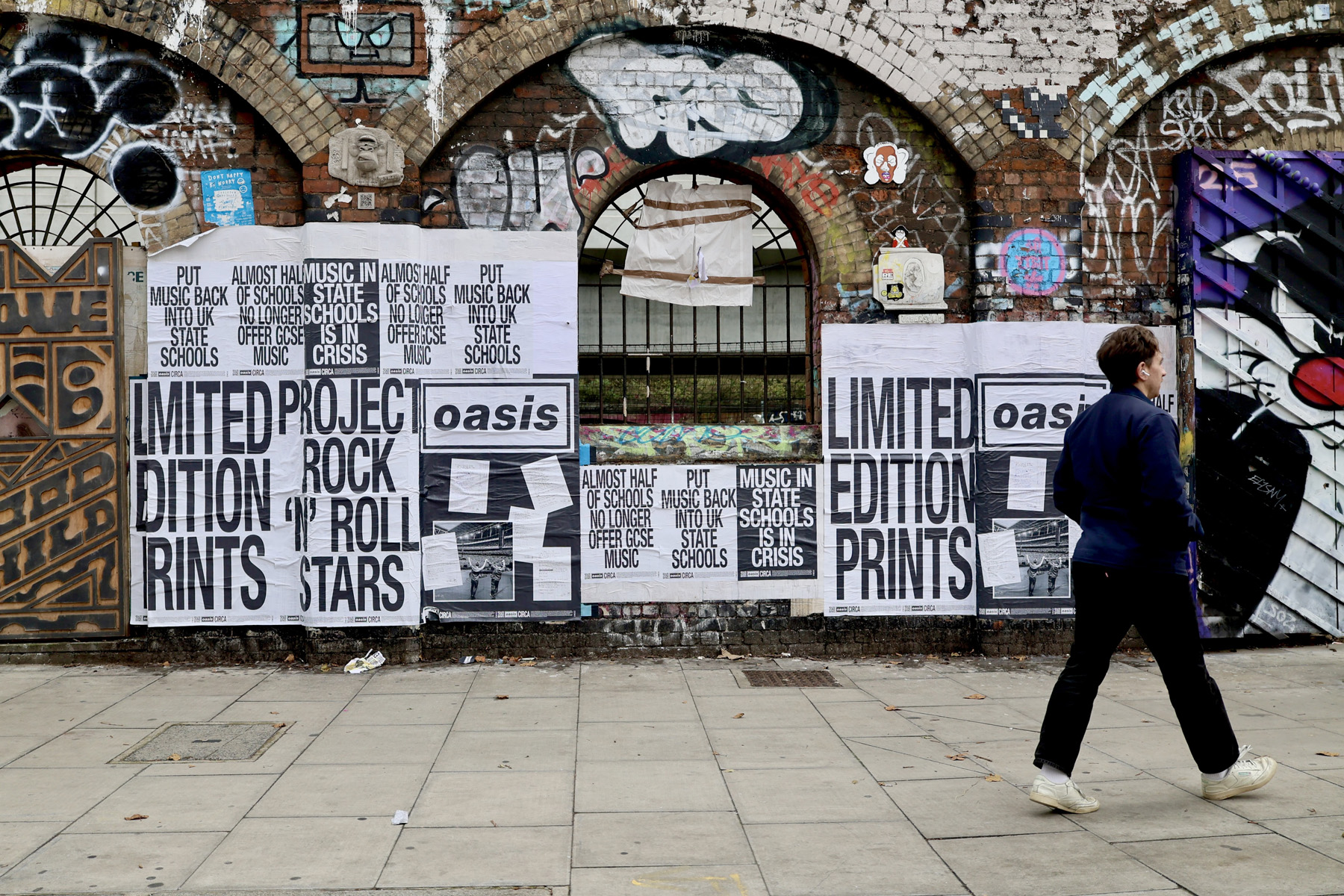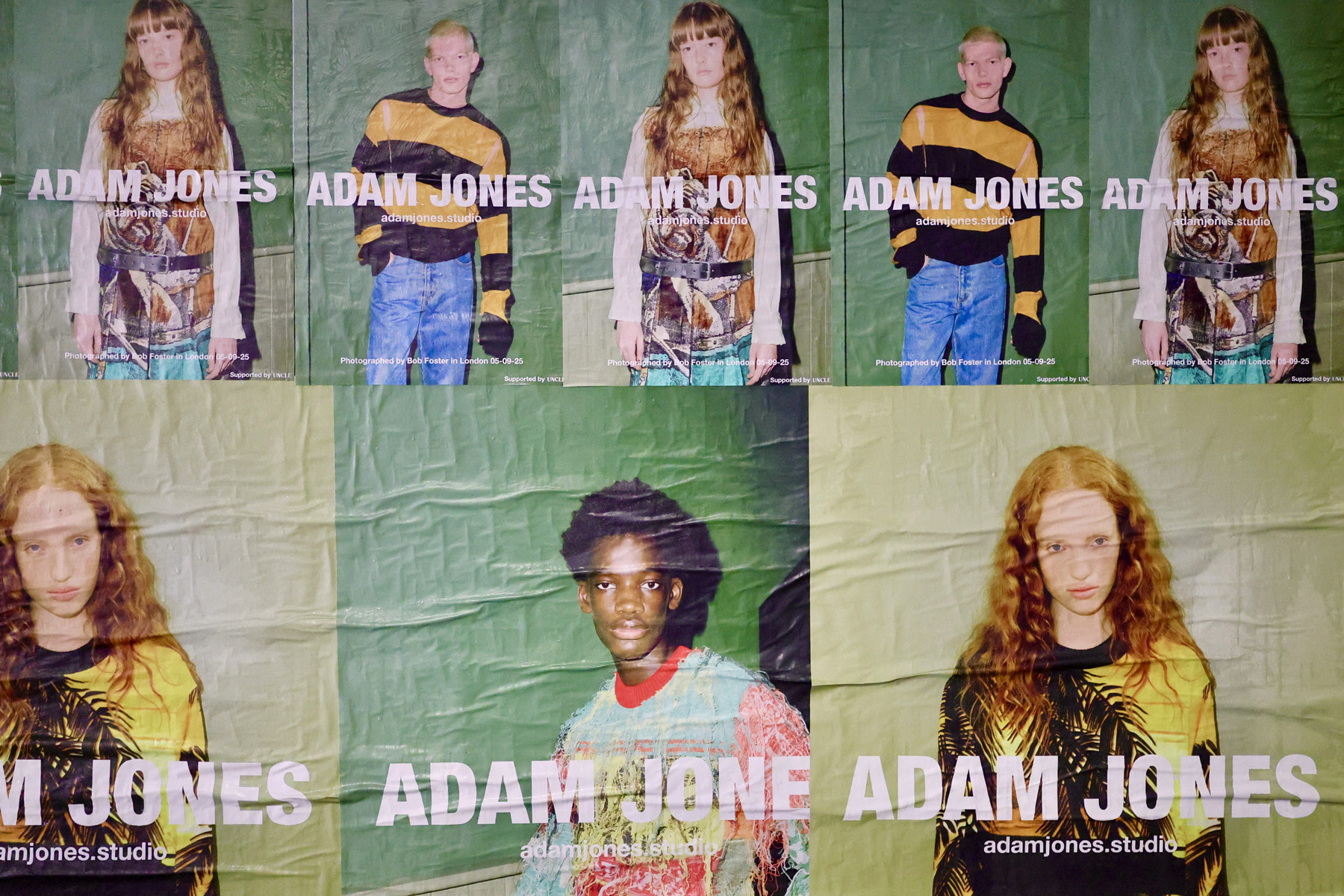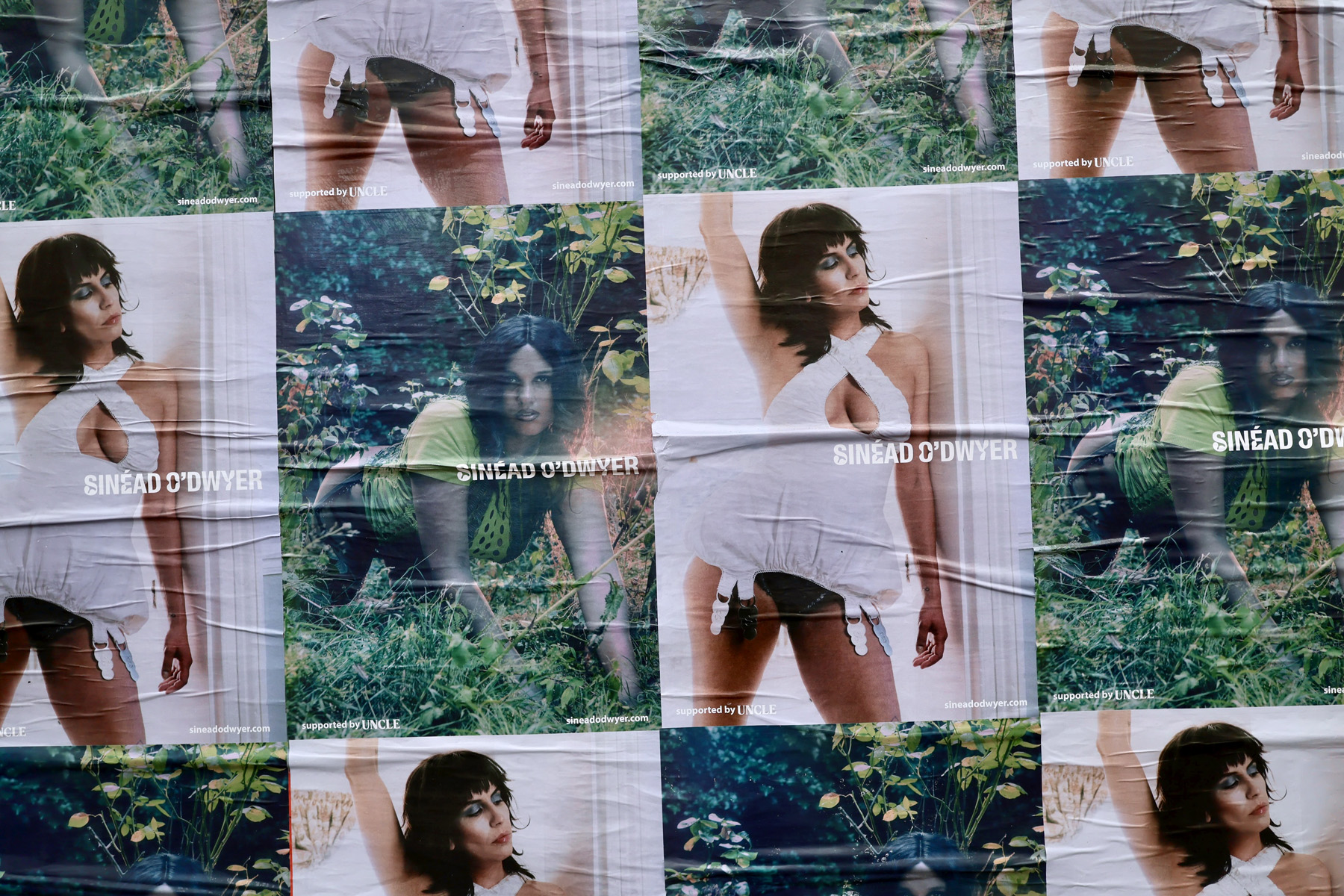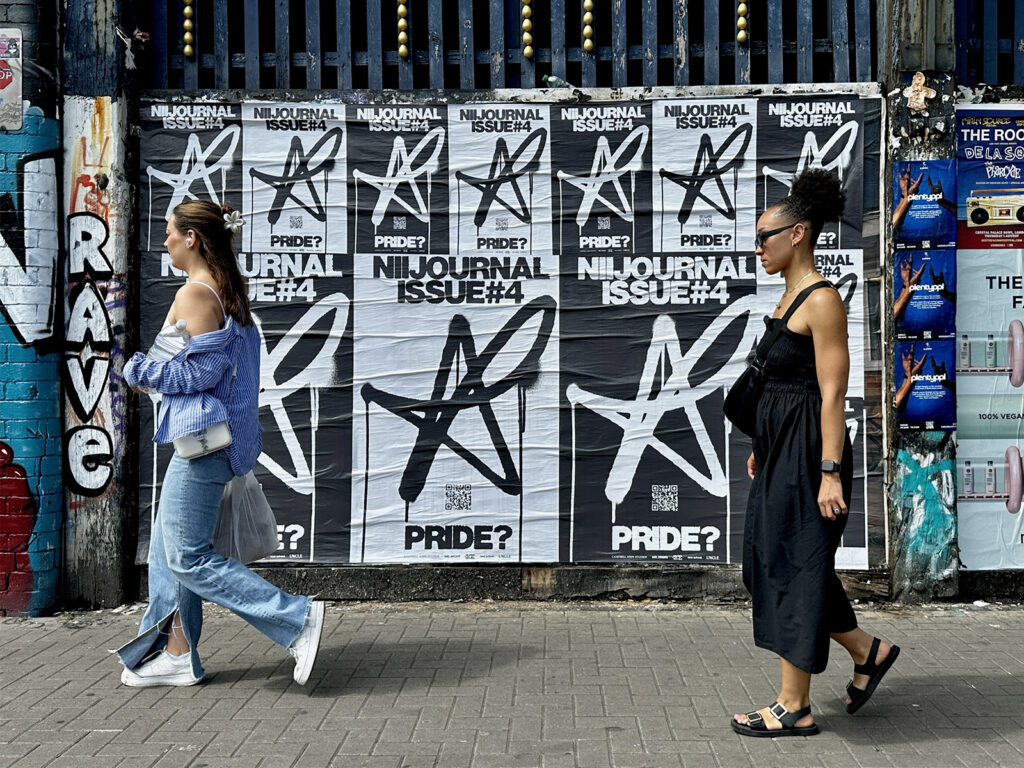
Campbell Addy is a British-Ghanian artist, photographer and creative director in his own right. Known best for documenting a range of contemporary moments inspired by the intersection of Blackness, queerness, and global culture for the likes of Time, Dazed and Harper’s Bizarre. He has since founded of NiiJournal, a magazine that challenges mainstream narratives and explores the complexities of identity. Through photography, art direction, and storytelling, the magazine aims to elevate underrepresented voices and create a space where diverse experiences can be shared and celebrated. UNCLE have partnered with Addy for the release of Issue #4: PRIDE and spread the teaser cover image across London.
This issue cover itself reinterprets the Ghanaian flag to comment on recent political tensions surrounding LGBTQ rights in Ghana, emphasising the human impact behind legislative decisions. With contributions from range of artists, poets, and photographers, the magazine seeks to provide a nuanced portrayal of what it means to be Black and queer in today’s world, highlighting both the struggles and the joys of these identities.
Throughout the interview, Addy reflects on the influences that have shaped his artistic vision, from his dual heritage and experiences in London to the political landscapes that inform his work. We discuss the importance of authenticity and diversity in his creative process and the role of art in navigating complex cultural narratives. Looking forward to the future, he expresses a desire to continue exploring new perspectives and expanding his horizons, driven by a commitment to connecting people through shared stories and experiences.
TELL US MORE ABOUT ‘PRIDE,’ THE UPCOMING ISSUE OF YOUR MAGAZINE, NIIJOURNAL.
NiiJournal Issue #4: PRIDE? explores the intricate relationship between queerness, Blackness, and the broader diaspora. For this issue, I examine how queerness and identity manifest across the globe, specifically through the lens of Black and queer artists. We explore cultures and nations such as Brazil, Nigeria, Japan, England, and more. It’s important to me that this issue of Pride documents what it looks like to be Black and queer in 2024, almost like a zeitgeist.
WHAT IS THE SIGNIFICANCE OF YOUR REINTERPRETATION OF THE GHANAIAN FLAG FOR THE COVER?
On February 28th, my country, Ghana, attempted to pass a bill to criminalize the existence of the queer and LGBTQ community. This led me to create a poem called Feb 28, which highlights my angst, worries, and questions for those who don’t understand the profound impact this will have on our people. To underscore this, I wanted to create a series of images that symbolically address this matter. By placing the Ghanaian flag on the cover and replacing the black star with a soft-featured Black model, I wanted to comment on two things: first, that we are all Black stars, and second, that people often forget that behind the legislation, real humans are affected. I aimed to create an image that showcases my pride for my nation and also my questionable pride, reminding those who may oppose the existence of people like me that we are all just human at the core.
CAN YOU DELVE INTO THE CONTENT AND THEMES OF BLACKNESS AND QUEERNESS THAT YOU’VE EXPLORED WITHIN THE MAGAZINE?
Without giving too much away, we explore queerness in various ways in the magazine. First, there are the cover stories by myself and IB Kamara and Brazilian artists MAR+VIN. My cover story highlights the different facets of oppression that Black people might face if bills like the one from February 28th are passed, ranging from physical attacks to the stifling of parliament and the unconscious biases that may emerge if such legislation is allowed. On the other side of the world, we explore queerness in Japan, featuring a queer couple, Koji and Shiba, who are raising a son in a wholesome manner. I didn’t just want to showcase the things that harm us but also the hope and joy that can exist when people are allowed to be themselves without their existence being questioned. We feature explorations from artists like Cameron Ugbodu, who returns to his hometown of Benin for the first time to meet his family, and a beautiful story set in the North of England by George Hutton, where he discusses a football legend Arthur Wharton whose influence might have been lost due to his race and the time in history but who was, at one point, one of the greatest athletes. I wanted to touch on the different aspects of Blackness and queerness from various angles so that whoever picks up the magazine can understand that we are multilayered, beautiful beings, and our existence is vital for everyone else.
HAS LONDON’S ARTISTIC AND CULTURAL LANDSCAPE INFLUENCED THE WAY THESE THEMES ARE EXPLORED?
Yes! London is a melting pot of immense talent, cultures, and differences. I have always been exposed to a multitude of people, which has allowed me to apply that global perspective to this issue. Being in such a diverse environment has shaped my ability to think more globally when commissioning and curating the issue.
HOW HAS POLITICS IMPACTED THE DIRECTION THIS TOOK, AND DO YOU GENERALLY TACKLE SUBJECTS THAT PULL FROM THAT LANDSCAPE?
The attempt to pass the bill significantly influenced and charged me to create this current story and the poem Feb 28. Politics impacts this issue directly because it affects me directly. We touch on Gaza with a poem by Swati Ved and on marriage with another poem by Kai Isiah Jamal. When your very being is politicised, it’s often hard not to create work that responds to that. I try to speak from a place of facts and subtle emotions so that my counter to political commentary cannot be easily disputed.
TELL US MORE ABOUT THE POSTER DESIGN ITSELF THAT CENTRES AROUND A STAR GRAPHIC.
When working on the logo design with my team and CBC Next Gen, I wanted to create something synonymous with the universal themes we touch on as we explore different cultures around the globe. We wanted something that everyone could recognise and digest, regardless of cultural or language differences. The star motif felt perfect for that. I wanted NiiJournal to have a logo, not just a word, that represents it—something positive and abstract. The star was also taken from my original signature. It symbolises being part of NiiJournal. The star represents humans as stars, showing that we are all on this planet together, and we can all shine. It’s a never-ending single-line drawing that connects us all in unity.
WHAT DO YOU HOPE PEOPLE WILL TAKE AWAY FROM THIS ISSUE?
I want people to take away more than just the different stories; I want them to understand that we are not monolithic. In the context of current race relations in the UK and across the world, I want people to see that we are all human and that many of the issues we face are the same as those faced by others, even those who might oppose us. I want people to understand that our differences, though they may seem to create a divide, actually bring us together. I love the process of understanding and discovering new people, and I hope this issue offers new perspectives from different artists, photographers, poets, painters, and writers. I want it to be an exploration of discovery for anyone who picks up the magazine.
YOUR BRITISH-GHANAIAN HERITAGE IS A PROMINENT INFLUENCE IN YOUR WORK. CAN YOU SHARE SOME SPECIFIC CULTURAL ELEMENTS FROM YOUR BACKGROUND THAT HAVE PARTICULARLY SHAPED YOUR ARTISTIC VISION?
As an artist born and raised in the UK who has also spent a lot of time in Ghana, I’ve always lived in duality. I really lean into that now because I believe that juxtaposing and mixing different elements can create some of the most exciting and creative outcomes. When it comes to my work, I often try to mix ingredients to discover something new and interesting. Living in both the UK and Ghana has always given me a sense of how big the world is and inspired me by how similar humanity is despite our differences in location. It’s a humbling experience. Music is also an important part of my creative process. From listening to Ghanaian highlife to Missy Elliot, the visualisation of music—from art direction to styling—really helps me. For the first issue of NiiJournal, I was listening to Yeezus by Kanye West. For NiiJournal Issue 2, I was inspired by Nina Simone and Solanges A Seat at the Table. For this issue, I’ve been listening to Ghanaian highlife.
HOW DID YOUR EXPERIENCE AS A STUDENT IN LONDON CONTRIBUTE TO YOUR ARTISTIC STYLE, PARTICULARLY IN THE CONTEXT OF YOUR SELF-DISCOVERY?
As a young, out-of-city boy moving to London and studying at Central Saint Martins, it was a mind-opening experience. Being in London was like a melting pot of creativity and scenes. I was able to work under the radar, unseen, creating without pressure, which allowed me to build a lot of trust in myself and my creative vision. I am grateful to my friends and my university for those beautiful, formative years. It was a great time to be in London.
HOW HAVE YOUR PRESTIGIOUS AWARD WINS IMPACTED YOUR APPROACH TO ART?
I would say they haven’t changed my approach. I try not to think too much about it. I’m very grateful for all the awards and recognition I’ve received, especially the Isabella Blow Award, which is a tremendous honor. However, I don’t let it get into my head, so I often don’t think about it. Winning an award hasn’t impacted my approach to art, but it has helped me feel more secure in my work.
HOW DO YOU NAVIGATE BETWEEN DIFFERENT MEDIUMS?
I honor and respect each medium as a beautiful soul that I am interacting with. I make sure everything I do is authentic. Whether I’m a photographer taking a picture, a painter creating a painting, or a director making a film, I put on different hats and respect each role.
YOUR WORK OFTEN FEATURES STRIKING IMAGERY THAT CAPTURES DIVERSE NARRATIVES. HOW DO YOU CHOOSE YOUR SUBJECTS?
Most of my ideas come as stories and narratives inspired by real life. I try to maintain authenticity by ensuring the casting stays true to the idea.
LOOKING FORWARD, IS THERE ANYTHING YOU ARE EAGER TO EXPLORE AND WILLING TO DIVULGE?
I want to explore more of the world. I’m at a point in my career where I want to see more people and experience more diversity. I’m eager to expand my horizons so that my mind can continue to be inspired.

